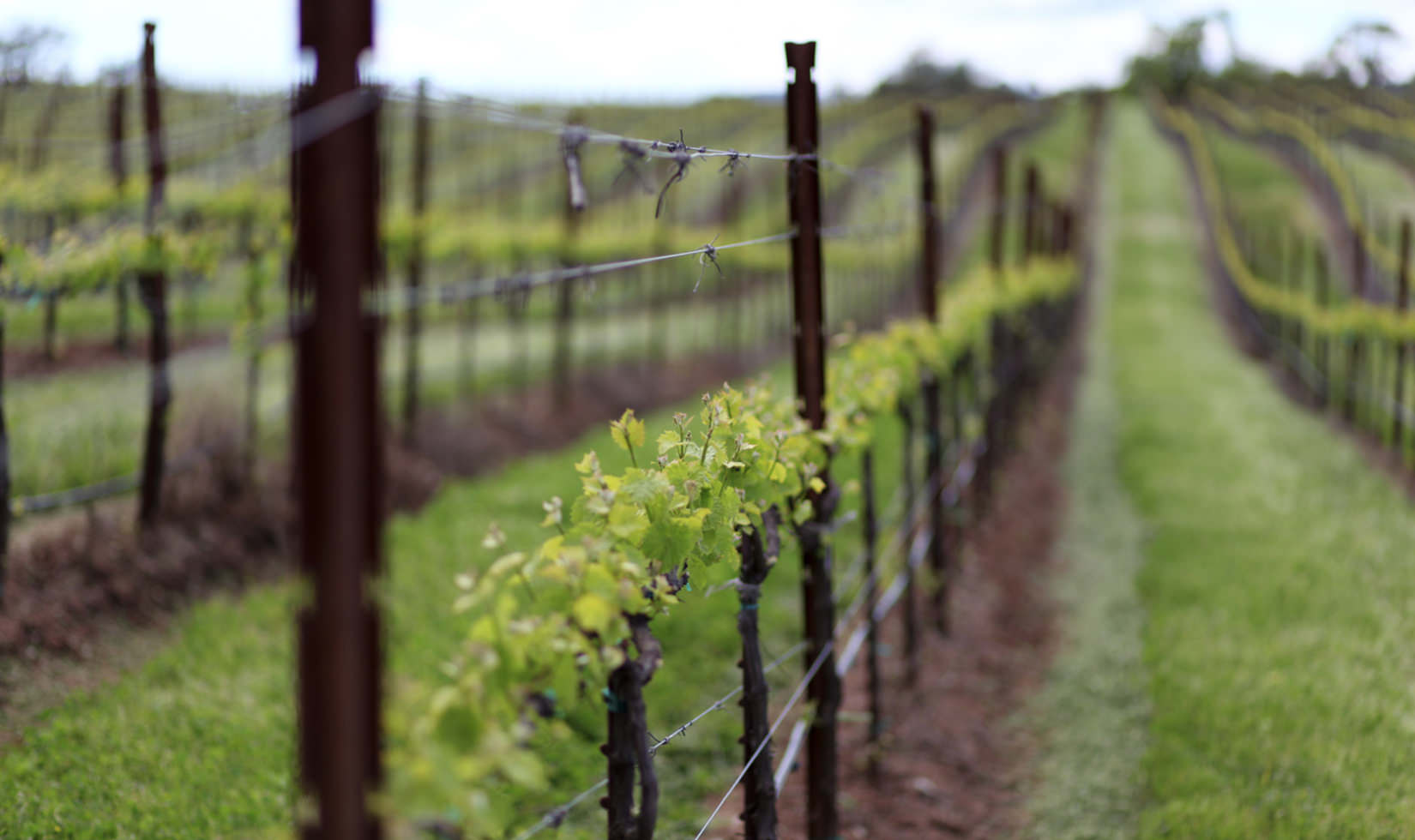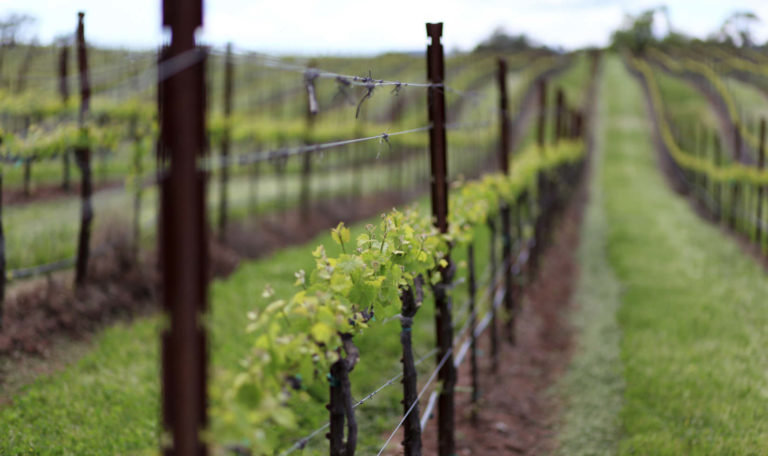Our vineyards slept through the driest winter on record in Sonoma County in 120 years, and after some welcomed rains in February, they’ve awoken from their dormancy with force.
Bud break began about one week earlier than usual for our vineyards. (This was partly due to weather and the timing of pruning.) Days in early March were unseasonably warm and sunny, sending each plant’s tiny leaves reaching for the sky. Russian River Valley Chardonnay bud break started around March 12, with Alexander Valley Merlot, Petit Verdot and Cabernet Sauvignon not far behind. Just one week passed between the start of Chardonnay bud break in the cool-climate, coastal Russian River Valley and Cabernet Sauvignon bud break in the warmer, inland Alexander Valley. It wasn’t uncommon for Winemaker Rob Davis to walk a vineyard row one day and see the newborn buds shoot up 3-6 inches within 48 hours.

Many weather factors during the growing season will have a much bigger impact on the fruit than budbreak. The biggest concern at budbreak is frost. Growers are concerned about their ability to frost protect with such a low water table due to the drought. If the vines can make it through the frost season without having the water turned on to keep the buds from freezing, that would bode very well for the rest of the growing season in terms of water availability. The frequent rains experienced this week are helping to keep temperatures above freezing here, which is a good thing. Most vineyards haven’t dipped below 39 degrees since budbreak, and more rain is in the forecast.
Good weather for fertilization at bloom will be key to a great vintage. As far as predicting a crop size, it’s just a futile exercise until fruit set, unless the crop is lost to a bad frost. During this delicate time when buds are venerable, winemakers and growers remain cautiously optimistic. We have about a month left before the frost-scare time period passes. Fingers crossed that our good luck with weather continues. Rains are helping to fill the soil and local reservoirs like Lake Mendocino.
Learn more about budbreak in our 2013 spring blog post.



